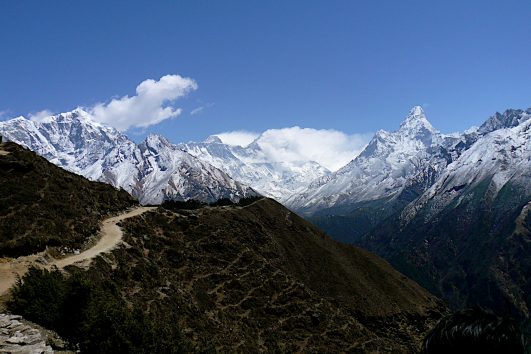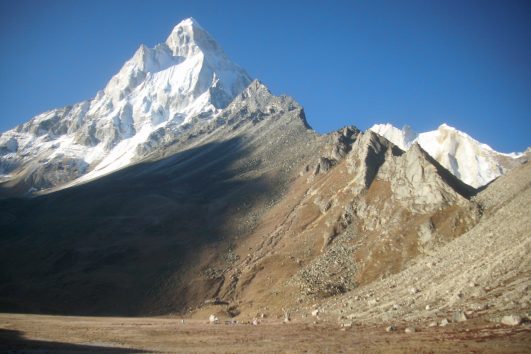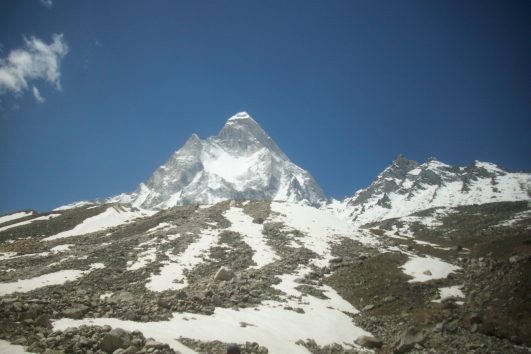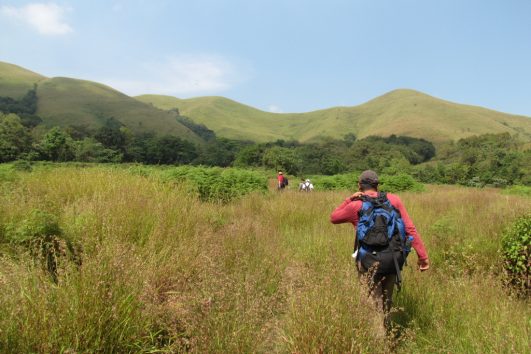
Himalayan Treks
Exploring Himalayan Treks
The Himalayas, often referred to as the “Roof of the World,” stretch majestically across five countries—India, Nepal, Bhutan, Tibet (China), and Pakistan. These towering peaks, home to some of the world’s highest mountains, have long been a magnet for adventure seekers and nature enthusiasts. Himalayan treks offer an unparalleled opportunity to experience the grandeur of this awe-inspiring mountain range. In this article, we will delve into the enchanting world of Himalayan treks, uncovering the significance, appeal, and the adventure that awaits those who dare to explore them.
The Significance of Himalayan Treks
The Himalayas are more than just a collection of lofty peaks; they hold immense cultural, ecological, and geographical significance.
- Cultural Significance: The Himalayas are not just a natural wonder but also a sacred realm in many cultures. Pilgrims and trekkers alike journey to these mountains to seek spiritual enlightenment and connect with ancient traditions.
- Ecological Significance: The Himalayan region is a biodiversity hotspot, with diverse flora and fauna. Trekkers have the opportunity to witness unique ecosystems, including rhododendron forests, alpine meadows, and high-altitude deserts.
- Geographical Significance: These mountains form a natural barrier between the Indian subcontinent and the Tibetan Plateau. Their vast expanse has shaped the climate, culture, and geopolitics of the entire region.
The Allure of Himalayan Treks
What draws adventurers from around the globe to the Himalayas? Here are some of the key factors that make these treks irresistible:
- Spectacular Scenery: The Himalayas offer some of the most breathtaking landscapes on the planet, from snow-capped peaks to lush valleys, pristine lakes, and cascading waterfalls.
- Diverse Routes: Whether you’re a novice trekker or an experienced mountaineer, the Himalayas offer routes of varying difficulty levels. You can choose from gentle hikes through picturesque villages or challenging ascents to high-altitude base camps.
- Cultural Encounters: The Himalayan region is a melting pot of cultures and ethnicities. During your trek, you’ll have the chance to interact with local communities, experience their hospitality, and witness traditional festivals and rituals.
- Wildlife Encounters: The region is home to rare and endangered wildlife species such as snow leopards, red pandas, and Himalayan tahr. Spotting these elusive creatures adds an element of excitement to your trek.
Planning Your Himalayan Trek
Before setting off on a Himalayan adventure, careful planning is essential.
- Choosing the Right Trek: Research various trekking routes, considering factors like difficulty, duration, and season. Popular choices include the Everest Base Camp Trek, Annapurna Circuit, and Bhutan’s Druk Path Trek.
- Permits and Regulations: Ensure you obtain the necessary permits and adhere to local regulations. Treks often pass through national parks and protected areas, so respecting the environment and wildlife is crucial.
- Physical Fitness and Health: Trekking in the Himalayas demands a good level of physical fitness. Consult with a healthcare professional, undergo a medical check-up, and prepare your body for the rigors of high-altitude trekking.
- The Adventure Begins: On the Trail As you set foot on the trail, the real adventure begins. Here are some highlights of what you can expect:
- Accommodation and Camping: Depending on your route, you can stay in teahouse lodges, guesthouses, or camp in the wilderness. Each option offers its own unique experience.
- Trekking Itinerary: A well-planned itinerary is essential. It will outline your day-to-day trekking schedule, highlight attractions and viewpoints, estimate daily distances, and include rest days for acclimatization.
- Safety and Emergency Preparedness: Trekking in high-altitude areas presents certain risks, including altitude sickness and unpredictable weather. Be prepared to recognize and deal with emergencies, have emergency contacts on hand, and know the evacuation procedures
- Responsible Trekking: Preserving the Himalayas Trekking in the Himalayas is not just about personal achievement, it’s also about responsible stewardship of this fragile environment.
- Leave No Trace Principles: Follow Leave No Trace guidelines to minimize your environmental impact. Pack out all trash, stay on marked trails, and avoid disturbing wildlife.
- Support Local Communities: Whenever possible, hire local guides and porters, purchase locally made products, and respect local customs. Your contributions can have a positive impact on remote communities.
- Cultural Sensitivity: Learn about the local customs and traditions, dress modestly, and ask for permission before taking photographs of people. Engage thoughtfully with the local culture to foster understanding and respect.
Post-Trek Reflection and Sharing
After completing your Himalayan trek, take time to reflect on your experiences and share them responsibly.
- Documenting Your Experience: Document your journey through photographs, journaling, or blogging. This not only helps you relive the adventure but also allows you to share your story with others.
- Tips for Post-Trek Recovery: Give your body the time it needs to recover after a challenging trek. Reflect on the lessons learned and the personal growth achieved during your journey.
- Responsible Storytelling: If you choose to share your trekking stories, do so responsibly. Inspire others to trek responsibly and preserve the environment by highlighting the beauty of the Himalayas and the importance of protecting them for future generations.

North Eastern Himalayan Treks
The North Eastern Himalayas, an awe-inspiring region known for its dramatic landscapes, pristine wilderness, and vibrant cultures, offer some of the most breathtaking trekking experiences in the world. Nestled between the mighty Himalayan range and the lush plains of India, this region is a paradise for adventure enthusiasts and nature lovers alike. In this guide, we will delve into the enchanting world of North Eastern Himalayan treks, providing you with all the information you need to embark on an unforgettable journey through this mesmerizing part of the world.
Planning Your Trek
Researching the Region
Before embarking on a trek in the North Eastern Himalayas, it’s crucial to thoroughly research the region. The area’s diverse geography and climate can vary significantly from one trekking destination to another. Understanding the best time to visit, the required permits, and any regulations is essential for a smooth experience.
Selecting a Trekking Route
The North Eastern Himalayas offer a wide range of trekking routes, catering to different skill levels and preferences. Whether you’re an experienced trekker looking for a challenging adventure or a novice seeking a more relaxed journey, there’s a trek for everyone. Some popular choices include the Kanchenjunga Base Camp Trek in Sikkim and the Dzukou Valley Trek in Nagaland.
Organizing Logistics
To ensure a hassle-free trek, plan your logistics meticulously. This includes arranging accommodation, transportation to the starting point, hiring guides and porters if necessary, and packing all the essential gear and supplies.
Top North Eastern Himalayan Trekking Destinations
Sikkim
- Kanchenjunga Base Camp Trek: This trek takes you to the base of the world’s third-highest peak, Mt. Kanchenjunga, offering breathtaking views of the Himalayan giants.
- Goechala Trek: An excellent option for those seeking a challenging high-altitude trek, Goechala provides panoramic vistas of Kanchenjunga and surrounding peaks.
Arunachal Pradesh
- Tawang Monastery Trek: Immerse yourself in the serene beauty of Arunachal Pradesh while visiting the famed Tawang Monastery and exploring its surroundings.
- Dibang Valley Trek: Venture deep into the wilderness of Arunachal Pradesh and discover the remote beauty of the Dibang Valley.
Nagaland
- Dzukou Valley Trek: Known for its lush meadows and seasonal blooms, Dzukou Valley is a trekker’s paradise, especially during the rhododendron season.
Assam
- Manas National Park Trek: Combine trekking with wildlife viewing in the UNESCO-listed Manas National Park, home to diverse flora and fauna.
Meghalaya
- Double Decker Living Root Bridge Trek: Experience a unique trek through dense forests and witness the marvel of living root bridges in Meghalaya.
Mizoram
- Phawngpui Trek (Blue Mountain Trek): Explore the ‘Blue Mountain’ of Mizoram, Phawngpui, known for its pristine wilderness and stunning landscapes.
Preparing for the Trek
Before embarking on your North Eastern Himalayan adventure, ensure you are physically fit and adequately prepared. This involves physical training, packing essential gear, taking health precautions, and understanding safety measures, including dealing with altitude sickness and adverse weather conditions.
During the Trek
During your trek, follow a day-to-day itinerary, practice trekking etiquette and responsible tourism, and be prepared to overcome challenges like altitude sickness and unexpected weather changes. Embrace the unique experiences, interact with locals to learn about their culture, and appreciate the region’s diverse flora and fauna.
Enjoying the Experience
Capture memories of your trek, and take time to soak in the stunning landscapes, cultural encounters, and the natural beauty of the North Eastern Himalayas. Your journey here will undoubtedly leave you with unforgettable moments.
Post-Trek Reflection
After completing your trek, share your experiences with others, reflect on the impact of trekking on the local environment and communities, and consider future treks and adventures in this remarkable region.
Additional Resources
Explore recommended books, websites, trekking agencies, and gear suppliers to help you plan your North Eastern Himalayan trek more effectively.

Treks in Central India
Central India is a land of remarkable diversity, encompassing a wide range of landscapes, cultures, and natural wonders. While this region is not always the first choice for trekking in India, it offers an array of hidden gems waiting to be explored. In this guide, we’ll take you on a journey through the lesser-known but equally enchanting treks in Central India. From the rugged hills of Pachmarhi to the wildlife-rich trails of Satpura, and the historical wonders of Bhimbetka, Central India has something to offer every trekking enthusiast.
Region’s Geographic and Cultural Diversity
Central India boasts a geographical tapestry that includes dense forests, rolling hills, pristine rivers, and expansive plateaus. Its climate varies from tropical to temperate, making it a year-round destination for trekkers. Beyond its natural beauty, Central India is also a melting pot of cultures. Indigenous communities and a rich history add depth to the region, making your trek not only a physical journey but also a cultural one.
Essential Preparations
Before embarking on a trek in Central India, several essential preparations must be made. Physical fitness, permits and regulations, and a well-thought-out packing list are crucial to ensure a safe and enjoyable experience. Central India’s treks can be challenging, so being adequately prepared is paramount.
Popular Trekking Destinations
Central India offers a range of popular trekking destinations, each with its own unique appeal. Pachmarhi, often referred to as the “Queen of Satpura,” is known for its lush greenery, cascading waterfalls, and numerous trekking trails that wind through its pristine forests. Satpura Range, on the other hand, is a paradise for wildlife enthusiasts, offering the chance to spot diverse fauna while trekking. Bhimbetka Caves take you on a historical journey, with ancient cave art and fascinating stories etched into their walls. And Chanderi, with its mix of history and natural beauty, is an emerging trekking destination worth exploring.
Lesser-Known Treks
Beyond the popular destinations, Central India hides several lesser-known treasures. The Melghat Tiger Reserve provides a unique opportunity to trek through tiger territory while contributing to conservation efforts. Panna National Park, a UNESCO Biosphere Reserve, offers jungle trekking amidst a stunning biodiversity hotspot. Tadoba Andhari Tiger Reserve is another hidden gem, where you can embark on wilderness treks and learn about crucial tiger conservation initiatives.
Safety and Environmental Concerns
Safety is paramount during any trek, and Central India is no exception. Knowing emergency contacts, carrying a well-stocked first-aid kit, and understanding the Leave No Trace principles are essential for a safe and responsible trek. Moreover, as you traverse through these natural wonders, respecting wildlife and their habitats is of utmost importance.
Cultural Immersion
Central India’s trekking experiences aren’t just about nature; they’re also a chance to immerse yourself in local cultures. Interacting with indigenous communities and participating in local festivities can enrich your trekking journey, giving you a deeper understanding of the region’s people and traditions.
Planning Your Trip
Planning your trek to Central India requires careful consideration of the best time to visit, accommodation options, transportation, and creating a well-balanced itinerary. This section will provide practical advice to help you plan a seamless adventure.

Treks in Western Ghats
The Western Ghats, a UNESCO World Heritage site, is a magnificent mountain range that stretches along the western edge of India. This vast expanse of lush greenery, pristine forests, and picturesque landscapes offers some of the most captivating trekking experiences in the country. This guide is your key to unlocking the natural wonders and adventure opportunities that the Western Ghats have to offer.
Understanding the Western Ghats
Geography and Location The Western Ghats, also known as the Sahyadri Range, run parallel to the western coast of India, covering the states of Maharashtra, Goa, Karnataka, Kerala, and Tamil Nadu. These mountains are a crucial geographical feature, influencing the region’s climate and playing a significant role in India’s ecology.
Biodiversity and Ecological Significance The Western Ghats are a biodiversity hotspot, home to a wide range of plant and animal species, many of which are endemic. The region’s rich ecology contributes to the overall health of the Indian subcontinent.
Climate and Best Times for Trekking in the Western Ghats is best enjoyed during the post-monsoon season from October to March when the weather is relatively cooler and the landscapes are lush and vibrant. The monsoon season, from June to September, is to be avoided due to heavy rainfall and increased risks of landslides.
Essential Preparation
Physical Fitness and Health Considerations Trekking in the Western Ghats can be physically demanding. It’s essential to assess your fitness level and consult a healthcare professional if you have any medical concerns before embarking on a trek.
Trekking Permits and Regulations Check for trekking permits and regulations that may apply to the specific trekking destinations in the Western Ghats. Regulations are in place to protect the fragile ecosystems.
Choosing the Right Trekking Gear Selecting appropriate gear is crucial for a comfortable and safe trek. Ensure you have the right footwear, clothing, backpack, and other essential equipment.
Packing Essentials for Western Ghats Treks Create a comprehensive packing list that includes items like water bottles, first aid kits, navigation tools, and camping gear if needed.
Popular Trekking Destinations
Selection of Diverse Trekking Spots The Western Ghats offer a wide range of trekking destinations, each with its unique charm and challenges. Some popular spots include Munnar in Kerala, Coorg in Karnataka, Mahabaleshwar in Maharashtra, Goa’s Western Ghats, and the Nilgiris in Tamil Nadu.
Detailed Descriptions of Each Destination Each destination has its own distinct topography, vegetation, and cultural significance, making it essential to research and plan accordingly.
Difficulty Levels and Suitability Western Ghats treks vary in difficulty, from easy and family-friendly hikes to challenging high-altitude treks suitable for experienced adventurers. Choose a trek that matches your skill level and preferences.
Trekking Routes and Trails
Highlighting Some Iconic Trekking Trails Explore iconic trekking trails such as the Anamudi Peak in Kerala, Tadiandamol in Karnataka, or the Dudhsagar Waterfall trek in Goa, each offering a unique adventure.
Information on Trail Lengths, Elevation, and Difficulty Understand the specifics of the trails you plan to trek, including distance, elevation gain, and the expected duration of the trek.
Unique Features and Attractions Along the Routes Discover the natural wonders and scenic viewpoints that make each trek special. These can include waterfalls, wildlife sightings, and panoramic vistas.7